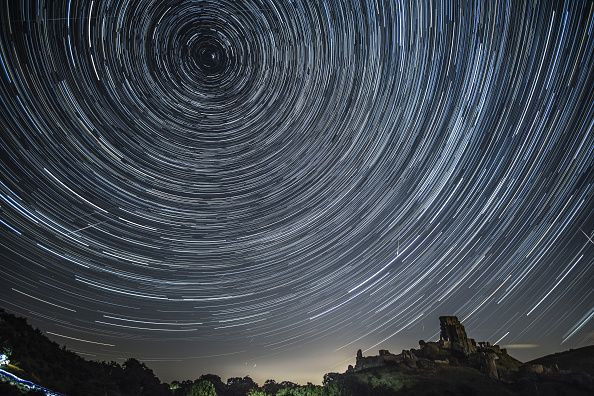Meteor Showers, Eclipse: November Sky Events To Watch Out For
KEY POINTS
- There will be several meteor showers in November
- The new moon will provide excellent opportunities for sky watching
- November's full moon will be a "micro full moon"
November has quite a few treats for sky watchers as it brings meteor showers and a partial lunar eclipse. Here are some of the sky events to watch out for in the coming month.
Supermoon new moon
The term supermoon was coined by astrologer Richard Nolle in 1979, and it pertains to either a full moon or a new moon when our satellite is at its closest to the planet, NASA noted. The new moon, which some consider to be a supermoon, will be on Nov. 4 at 5.15 p.m. EDT.
Although it's usually full moons that get more attention, new moons actually make for excellent sky watching because the moon will not be visible from the Earth. As such, its light won't obstruct the night sky views.
Uranus at opposition
The planet Uranus will also be at its opposition on Nov. 4, which means it will be "at its closest and brightest," NASA noted. Although it's still not considered to be among the visible planets, during the opposition, it will be bright enough for sky watchers with good eyesight to see it under ideal conditions.
Without the light of the moon obstructing the view, sky watchers could point their binoculars or telescopes to the sky and possibly catch a glimpse of the planet.
Northern and Southern Taurids
The Southern Taurids are active for more than two months, from Sept. 28 to Dec. 2, but its peak will be on Nov. 4-5 night, the American Meteor Society (AMS) noted. This means it will also happen on an evening when the moon is 0% full, giving sky watchers an excellent chance to spot the meteor shower. Although it's known to "rarely" produce more than five meteors per hour even during the peak, the Taurids are said to be "rich in fireballs."
On the night of Nov. 11-12, it will be the Northern Taurids' turn to shine. However, there may be a bit of obstruction as the moon will be 55% full. The Southern and Northern Taurids' simultaneous activity in October and November sometimes lead to an increase in fireball activity.
"There seems to be a seven year periodicity with these fireballs," the AMS noted. "2008 and 2015 both produced remarkable fireball activity. 2022 may be the next opportunity."
Leonid meteor shower
Just days later, yet another meteor shower will take the stage as the Leonids will peak on Nov. 17-18. Although the moon will be nearly full on the evening of the peak, for now until 2030, sky watchers can expect to see some 15 meteor shower members per hour. These are also often bright meteors with a "high percentage of persistent trains," the AMS noted, so sky watchers may still be in for a treat.
Partial lunar eclipse
Sky watchers will have another reason to look up on Nov. 19 as there will be a partial lunar eclipse. Those in North and South America, Australia, as well as parts of Europe and Asia, will get to witness the event when almost the entire moon will be in its umbra, Time and Date noted.
This also falls on a full moon, which will be a "micro full moon." It is also known as the Beaver Moon as it comes at the time of the year when beavers build dams.

© Copyright IBTimes 2025. All rights reserved.






















